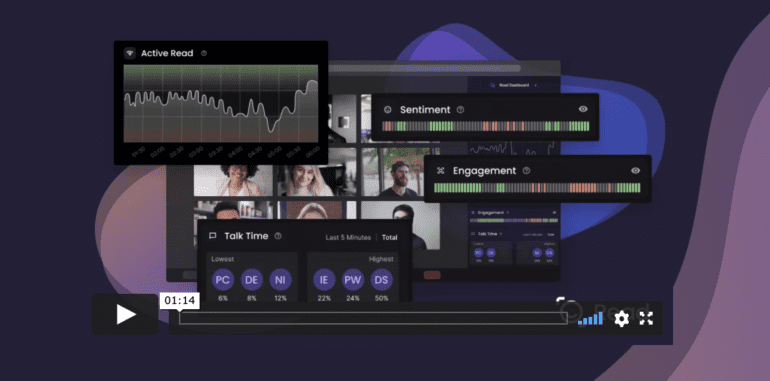- Meetings consume significant time, with professionals spending up to 8 hours per week on average.
- AI-powered summarization tools are increasingly popular, with nearly half of marketers using them.
- Read AI, founded by David Shim, offers cross-platform summarization for video meetings and now expands to messages and emails.
- Recent funding of $21 million fuels Read AI’s growth, enabling integration with Gmail, Outlook, and Slack.
- Read AI promises personalized summaries and actionable insights, aiming to revolutionize communication management.
- Despite controversies over privacy, Read AI remains confident in its proprietary methodology and productivity gains.
- Plans to double staff indicate confidence in Read AI’s future growth trajectory.
Main AI News:
As the business landscape evolves, so do the demands on professionals’ time. Meetings, once a necessary component of collaboration, have become notorious for consuming precious hours. According to Deputy.com’s 2022 poll, American professionals spend an average of eight hours per week in meetings, a significant drain on productivity.
In response to this challenge, the adoption of AI-powered summarization tools is on the rise. A recent survey conducted by The Conference Board revealed that nearly half of marketers are now leveraging AI to distill the contents of emails, conference calls, and other communications. This trend underscores the pressing need for solutions that streamline information processing and enhance workflow efficiency.
David Shim, co-founder of Read AI, recognizes this need all too well. Drawing from his experience as the former CEO of Foursquare, Shim, alongside co-founders Rob Williams and Elliott Waldron, established Read AI in 2021. Initially focusing on summarizing video meetings across various platforms like Zoom, Microsoft Teams, and Google Meet, Read AI has since expanded its capabilities to include message and email summarization.
In a recent development, fueled by a $21 million funding round led by Goodwater Capital and Madrona Venture Group, Read AI has introduced a new feature that integrates with Gmail, Outlook, and Slack. This enhancement allows users to receive daily updates, summaries, and AI-generated takeaways tailored to their specific needs and priorities.
Shim emphasizes that Read AI distinguishes itself by seamlessly integrating with existing communication channels, empowering users with personalized, actionable insights. With an average summary condensing 50 emails into one, Read AI promises to revolutionize how professionals manage their communications.
Despite the growing competition in the AI summarization space, Shim remains confident in Read AI’s capabilities. He asserts that Read AI employs a proprietary methodology to ensure accuracy and reliability, setting it apart from its rivals. While benchmark results are not provided, Shim highlights the tangible productivity gains that Read AI offers to its users.
However, Read AI is not without its controversies. Privacy concerns have been raised regarding its sentiment analysis tool, which interprets participants’ vocal and facial cues during meetings. Critics argue that such technology may perpetuate biases and pose security risks. Nevertheless, Shim defends the tool’s value in enhancing meeting dynamics and insists on users’ control over their data.
With substantial financial backing and a rapidly expanding user base, Read AI is poised for further growth. Plans to double its staff by the end of the year signal confidence in its ability to meet the evolving needs of modern professionals. As businesses seek to optimize productivity in an increasingly competitive environment, AI-powered solutions like Read AI offer a glimpse into the future of work efficiency.
Conclusion:
The emergence of AI-powered summarization tools like Read AI signifies a paradigm shift in how professionals manage their communications. As businesses strive for greater efficiency and productivity, such tools offer tangible benefits in streamlining workflows and optimizing resource allocation. With continued innovation and investment, the market for AI-powered solutions is poised for significant expansion, driving further competition and adoption across industries.

